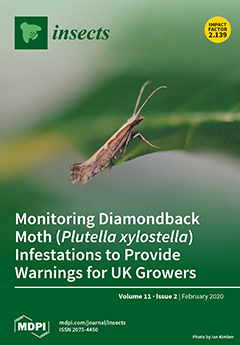Host plant affinity and geographic distance can play critical roles in the genetic divergence of insect herbivores and evolution of insect biotypes, but their relative importance in the divergence of insect populations is still poorly understood. We used microsatellite markers to test the effects of host plant species and geographic distance on divergence of two biotypes of the English grain aphid,
Sitobion avenae (Fabricius). We found that clones of
S. avenae from western provinces (i.e., Xinjiang, Gansu, Qinghai and Shaanxi) had significantly higher genetic diversity than those from eastern provinces (i.e., Anhui, Henan, Hubei, Zhejiang and Jiangsu), suggesting their differentiation between both areas. Based on genetic diversity and distance estimates, biotype 1 clones of eastern provinces showed high genetic divergence from those of western provinces in many cases. Western clones of
S. avenae also showed higher genetic divergence among themselves than eastern clones. The Mantel test identified a significant isolation-by-distance (IBD) effect among different geographic populations of
S. avenae, providing additional evidence for a critical role of geography in the genetic structure of both
S. avenae biotypes. Genetic differentiation (i.e.,
FST) between the two biotypes was low in all provinces except Shaanxi. Surprisingly, in our analyses of molecular variance, non-significant genetic differentiation between both biotypes or between barley and wheat clones of
S. avenae was identified, showing little contribution of host-plant associated differentiation to the divergence of both biotypes in this aphid. Thus, it is highly likely that the divergence of the two
S. avenae biotypes involved more geographic isolation and selection of some form than host plant affinity. Our study can provide insights into understanding of genetic structure of insect populations and the divergence of insect biotypes.
Full article






